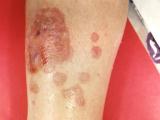May 11, 2007 (CIDRAP News) – Resistance to oseltamivir (Tamiflu) over the three influenza seasons from 2003 to 2006 remained low in Japan, the country with the world's highest use of the drug, according to a preliminary study from the World Health Organization (WHO).
The study, published in the Apr 27 issue of the WHO's Weekly Epidemological Record (WER), showed that resistance of influenza A and B isolates to oseltamivir was less than 0.5% over the three seasons. Community isolates that were randomly submitted by public health laboratories to the WHO collaborating center in Tokyo were tested by the Neuraminidase Inhibitor Susceptibility Network (NISN), the report said.
Resistance to oseltamivir is a concern because the drug, a neuraminidase inhibitor, is the recommended first-line treatment for patients who have H5N1 avian influenza, which is regarded as the leading candidate to evolve into a pandemic flu strain.
The isolates were tested by neuraminidase inhibition assay to determine 50% inhibitory concentrations (IC50) of oseltamivir (the concentration of drug necessary to reduce viral replication 50%) and/or by sequence analysis of the neuraminidase gene to detect mutations associated with antiviral resistance, the WHO report said.
The study group found that resistance levels were very low over the three seasons:
- During the 2003-04 season, 0.3% (3 of 1,180) of influenza A (H3N2) isolates demonstrated high IC50 values, and all three isolates had a single mutation in the neuraminidase gene associated with oseltamivir resistance. None of the 171 influenza B isolates showed resistance on IC50 (phenotypic) analysis. Sequence analysis of 15 influenza B isolates revealed that none had oseltamivir resistance mutations.
- In 2004-05, none of the influenza A viruses (558 H3N2 samples and 60 H1N1 samples) showed resistance by phenotypic or genotypic analysis. However, an "increased" number of influenza B viruses had at least ten times the mean IC50 value for oseltamivir and zanamivir (another neuraminidase inhibitor), though only one of these had a mutation associated with oseltamivir resistance. Sequence analysis of 252 influenza B isolates revealed that none had oseltamivir resistance mutations.
- In 2005-06, sequence analysis showed no oseltamivir resistance mutations in 251 H3N2 viruses, but 4 of 178 H1N1 viruses (2.2%) had a mutation in the neuraminidase. Sequence analysis of 163 influenza B isolates revealed no oseltamivir resistance mutations.
The report concludes that oseltamivir resistance was low despite extensive use of the drug in Japan. A press release on the study from Roche, manufacturer of osteltamvir, said 35 million Japanese patients used the drug during the study period.
The low level of resistance found in the three most recent influenza seasons is consistent with the levels observed from 1999 to 2002, the first 3 years of neuraminidase inhibitor use in clinical settings, the report states.
"It is unknown whether these infections represent low-level transmission of resistant variants to contacts or spontaneous emergence of resistance," the report says. But low-level transmission is more likely, it adds, because certain resistance mutations are transmissible to ferrets in the lab setting and because primary oseltamivir resistance was not found in isolates collected before the drug was introduced.
David Reddy, pandemic task force leader for Roche, called the findings encouraging. "These results confirm that the potential for the development of resistance to Tamiflu is very low, even when used extensively in the management of seasonal influenza," he said in the news release.
A few cases of oseltamivir resistance in humans infected with H5N1 avian flu have been reported. In January the WHO announced that moderately resistant H5N1 strains had been detected in two Egyptian patients. Strains that had osteltamivir-resistance mutations were also found in two Vietnamese patients previously.
However, when the WHO reported the Egyptian cases it said there was no evidence that oseltamivir-resistant strains were spreading in Egypt or elsewhere. The agency did not change its antiviral treatment recommendations in view of the findings, saying the clinical level of resistance linked with the mutations was not yet well established.
Last month, in its latest recommendations for treating H5N1 patients, the WHO suggested considering higher doses of oseltamivir in some cases, though the advice was not linked to concern about resistance. The agency said some patients, such as those who have pneumonia or worsening disease, may benefit from a two-fold higher dosage, a longer regimen, or, depending on resistance findings for local H5N1 isolates, combination therapy with amantadine.
WHO. Monitoring of neuraminidase inhibitor resistance among clinical influenza virus isolates in Japan during the 2003-2006 influenza seasons. WER 2007 Apr 27;82(17):149-50 [Full text]
See also:
May 9 Roche press release
http://www.eurekalert.org/pub_releases/2007-05/k-wdc050907.php
Apr 20 CIDRAP News story "WHO warns against steroids for H5N1 patients"





















